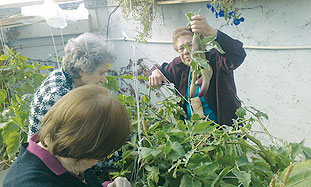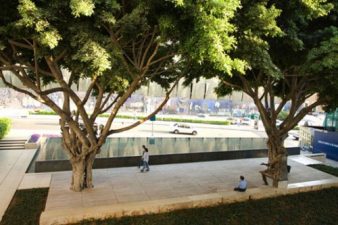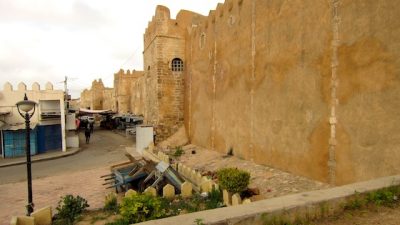I went to see Scott Hamilton Kennedy’s documentary film, “The Garden,” at Tribeca Cinemas in Manhattan, part of docs on the shortlist for the Gucci Tribeca Documentary Fund. I went with a group of farmers living in New York, some of whom work on urban farming projects in and around the City.
The film tells the tragic story of the largest community garden in the United States in South Central Los Angeles. The garden, a full-fledged 14 acre farm in a blighted neighborhood, was created in response to the LA riots in an effort to heal the city. Lower income residents tended the garden. As the demographics of the area changed, more Latin Americans moved to the area and soon made up a majority of the farmers.
The film shows stunning images of corn and tomatoes growing amidst and industrial backdrop. In fact, the viewer sees countless helicopter images of this impressive green square in the middle of Los Angeles sprawl, demonstrating the stark contrast between sunflowers and concrete, verdancy and the pallor of urban industry. The importance of the garden to many of the gardeners is most inspiring, as many relied on the garden to feed their families and had been looking for empowering work to do in the city that would allow them to feed their families hearty and healthy meals.
The story, however, takes a dreadful turn as we see the end result of a failure of government. Without notice the farmers arrive one day to see a letter of eviction, signed by a developer whose name the farmers did not recognize. The mostly immigrant farmers were left asking, who is this developer, and isn’t this government land?
The city of Los Angeles failed to notify these farmers that the garden operated on a continually renewed thirty day lease, and that through illegal backroom deals they sold the land on which the garden was farmed back to its original owner (who had his land taken through eminent domain in the early 1990s). In short, Kennedy shows just how petty interests and government corruption can squash the dream of a community garden.
The impressively shot and cut film weaves together many different narratives, using the overarching demise of the garden as the film’s core. One powerful thread in the documentary deals with how a seemingly powerless immigrant group can rise to the occasion and develop political might, as these farmers managed to do on a grassroots level. They had no experience in this arena and managed to fight the government with injunctions and lawsuits, one of which is still pending today. During a point of hope these impoverished gardeners raised millions of dollars to keep their dream alive. Another narrative focuses on the interesting dynamics among the farmers, competing power and in fighting as they coalesced to save their dream.

One of the many questions that the film raises is what is the best use for land that will serve and help the most people? City advocates were fighting to tear down the garden and replace it with a soccer field, as well as warehouse which would supply jobs. We find out later that the soccer field plan was a ruse to profit off the land sale.
Perhaps the hardest moment of the film is the decimation of the crops. Bulldozers uproot over ten years of farming while police officers hold back protestors and bystanders who are screaming and crying. Helicopter shots reinforce how much darker the city looks without the 14 acres of green.
For all those who share the dream to see green space in our cities and all peoples farming, I highly recommend this powerful movie. Although in some ways it’s a frustrating story to any activist and environmentalist, this story should be seen as a motivating force and not a cautionary tale. I also think many themes, such as the integrity of land ownership, as well as communal agriculture, parallel stories coming out of the Middle East, and resonate strongly for me as a green prophet and one who constantly reads about various land/agriculture disputes in the region. Please go see this film once it makes its way to a cinematheque near you.





Great article. I’m gonna see the movie for inspiration. I just started participating in a community garden in Tel Aviv. 🙂